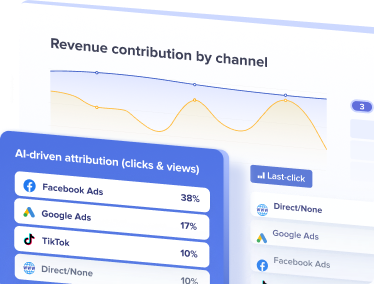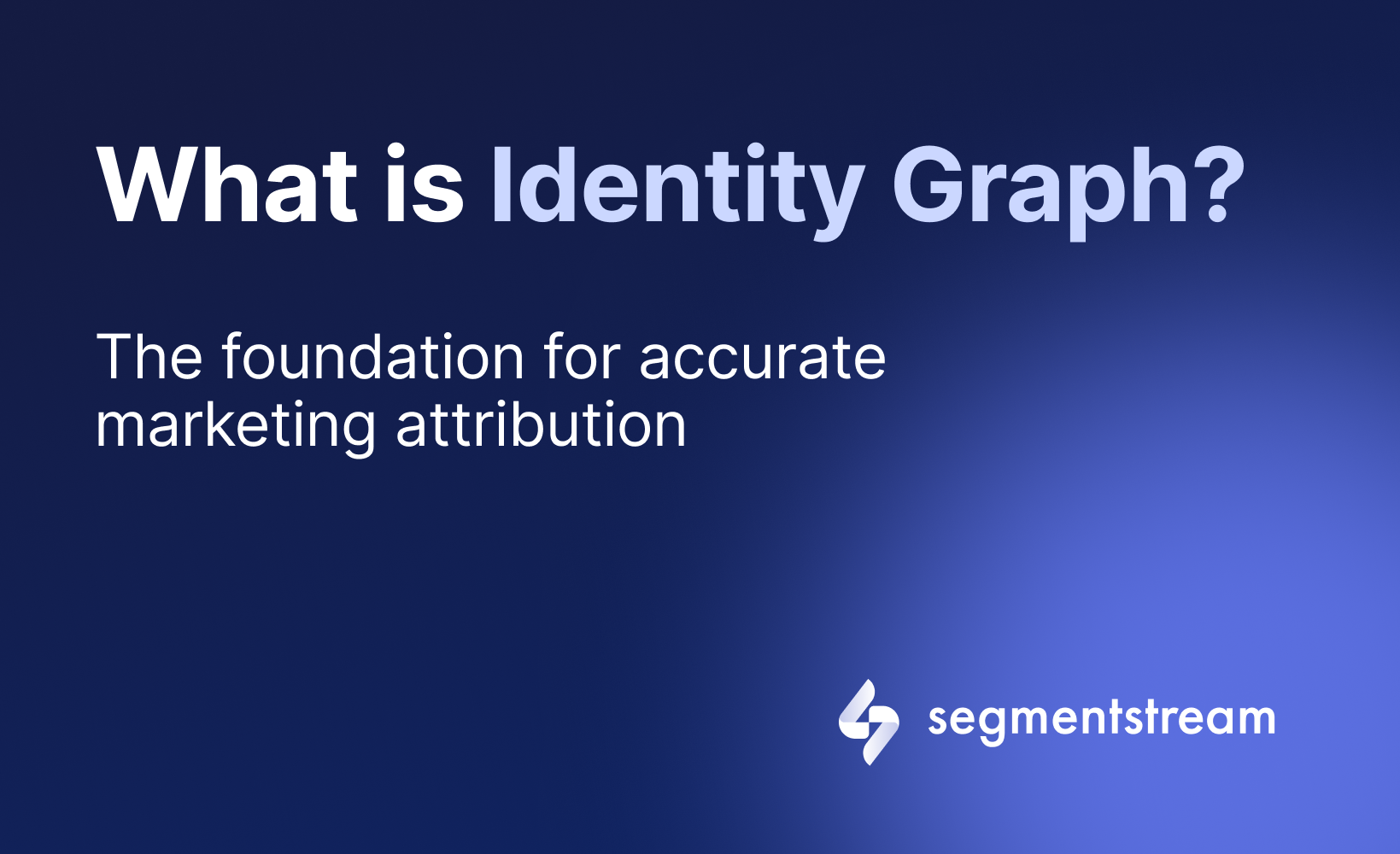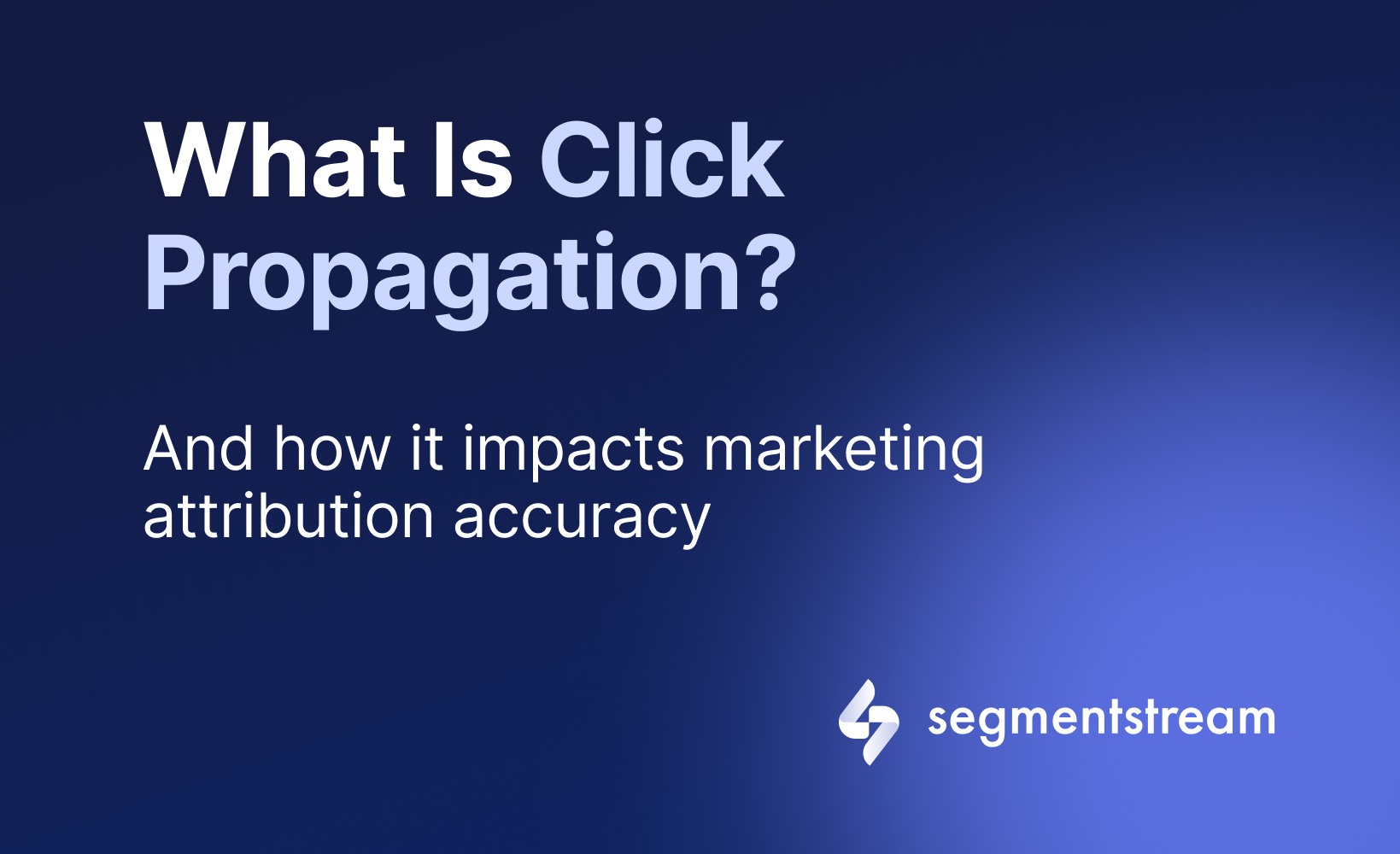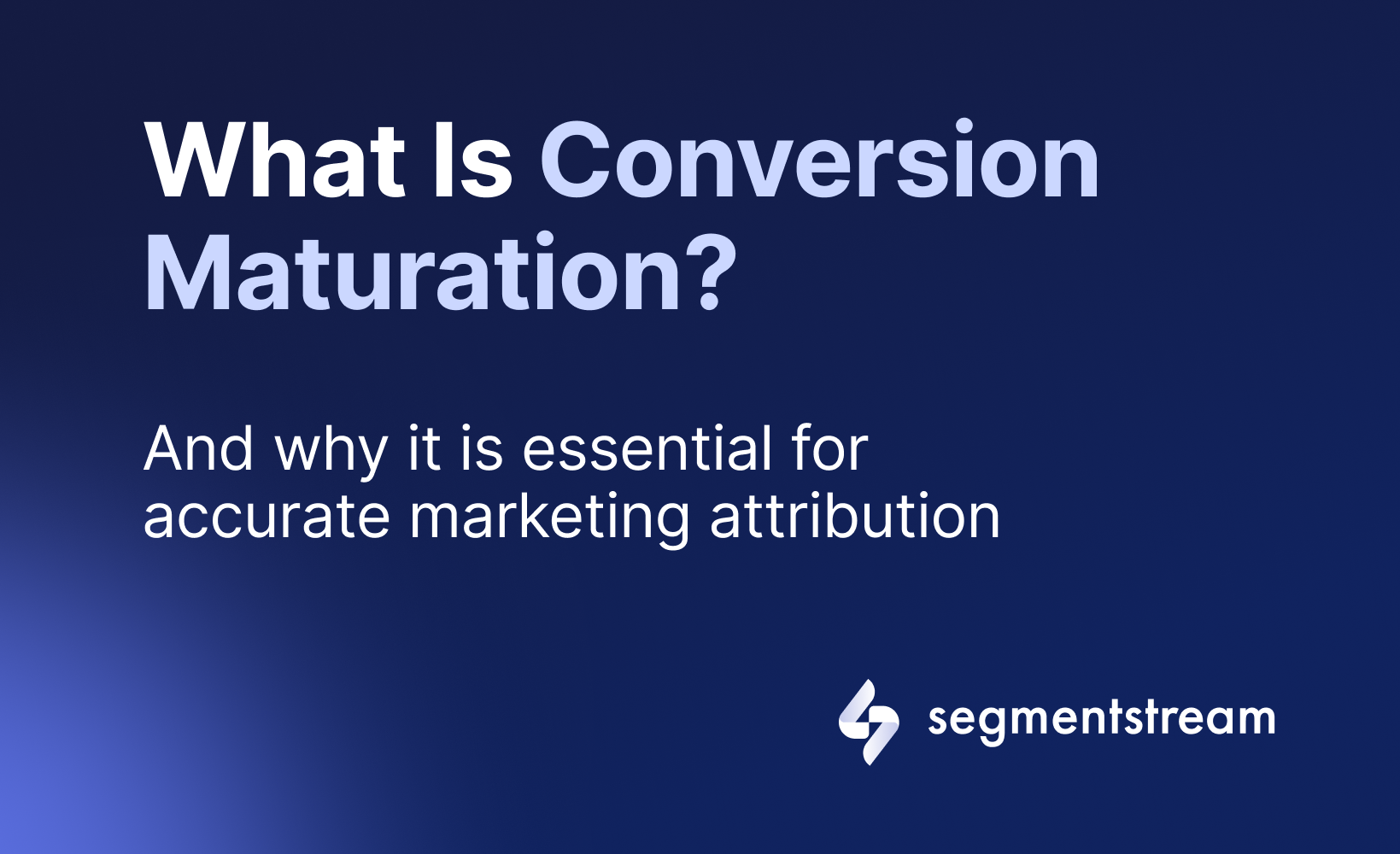
Marketing attribution models explained: which one is the best for your business?

Navigating the landscape of marketing attribution models is a complex task since there are so many options to choose from. Yet, there are particular challenges that actually make the majority of modern attribution models in marketing ineffective.
So how can businesses pick the best model to actually get actionable marketing data?
Let’s dig deeper into the topic and learn more about what marketing attribution models are, what types there are, and how to pick the right one in the cookieless world where attribution can produce adequate results no more.
Marketing attribution models in a nutshell
Let’s start with the basics.
What is attribution in marketing?
Marketing attribution is the process of identifying and assigning credit to the various touchpoints that led to a conversion. This is essential for measuring the effectiveness of different marketing channels and optimising your marketing strategy.
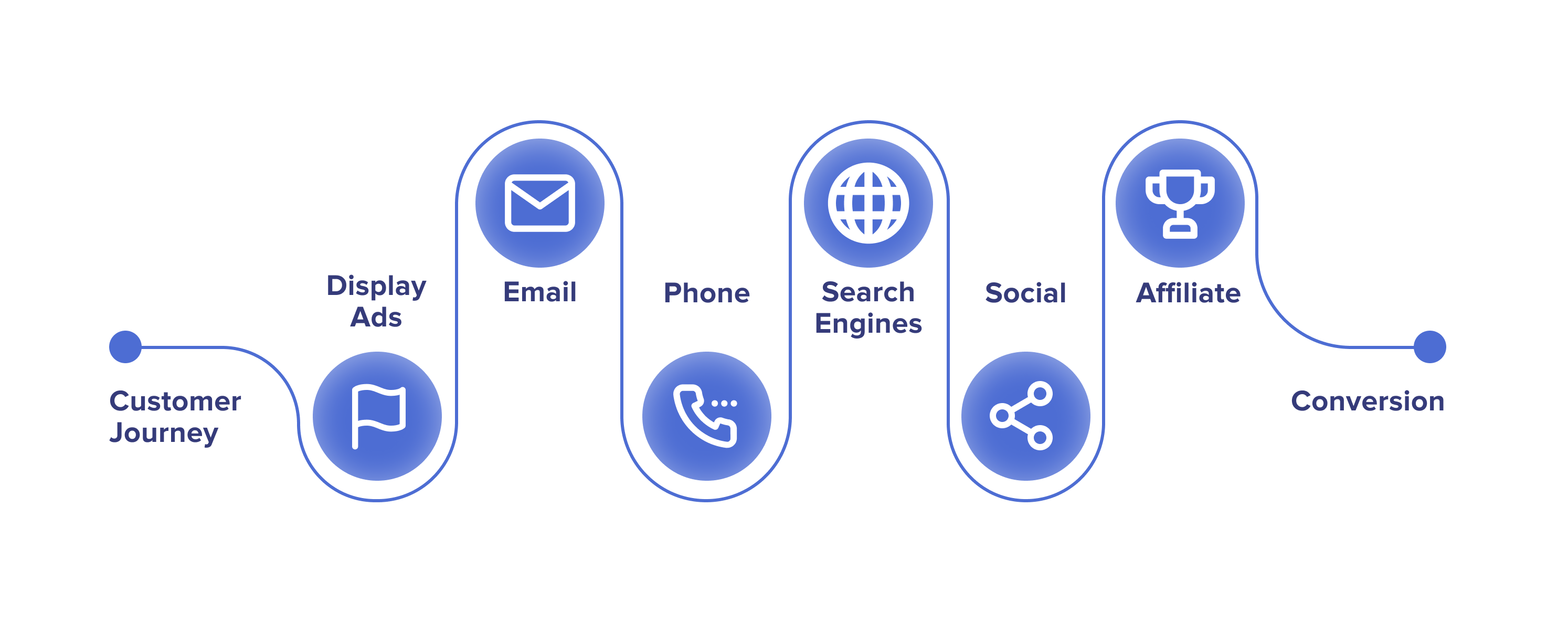
What is an attribution model in marketing?
Marketing attribution models are the formulas used to assign credit to each touchpoint in the customer journey.
There are various types of marketing attribution models, and each has its own strengths and weaknesses. In general, attribution models can be divided into two groups: deterministic and probabilistic.
Deterministic attribution models are rule-based and assign 100% of the credit to a specific touchpoint in the customer journey. This means that if a customer clicks on a Facebook ad and then makes a purchase, the Facebook ad will receive all the credit.
The most common deterministic attribution model is the first touch attribution model, which assigns all credit to the first touchpoint a customer had with the brand.
Probabilistic attribution models, on the other hand, use statistical analysis to assign credit to each touchpoint based on the probability that it contributed to the conversion. These models consider all touchpoints in the customer journey and distribute credit accordingly.
The most adopted probabilistic attribution model is the multi-touch attribution model.
Another categorisation in the marketing attribution models landscape is by how many touches matter in the journey: single-touch and multi-touch models.
Single-touch attribution models assign all credit to a single touchpoint in the customer journey. These models are simple and easy to implement, but they don’t provide a complete picture of the customer journey.
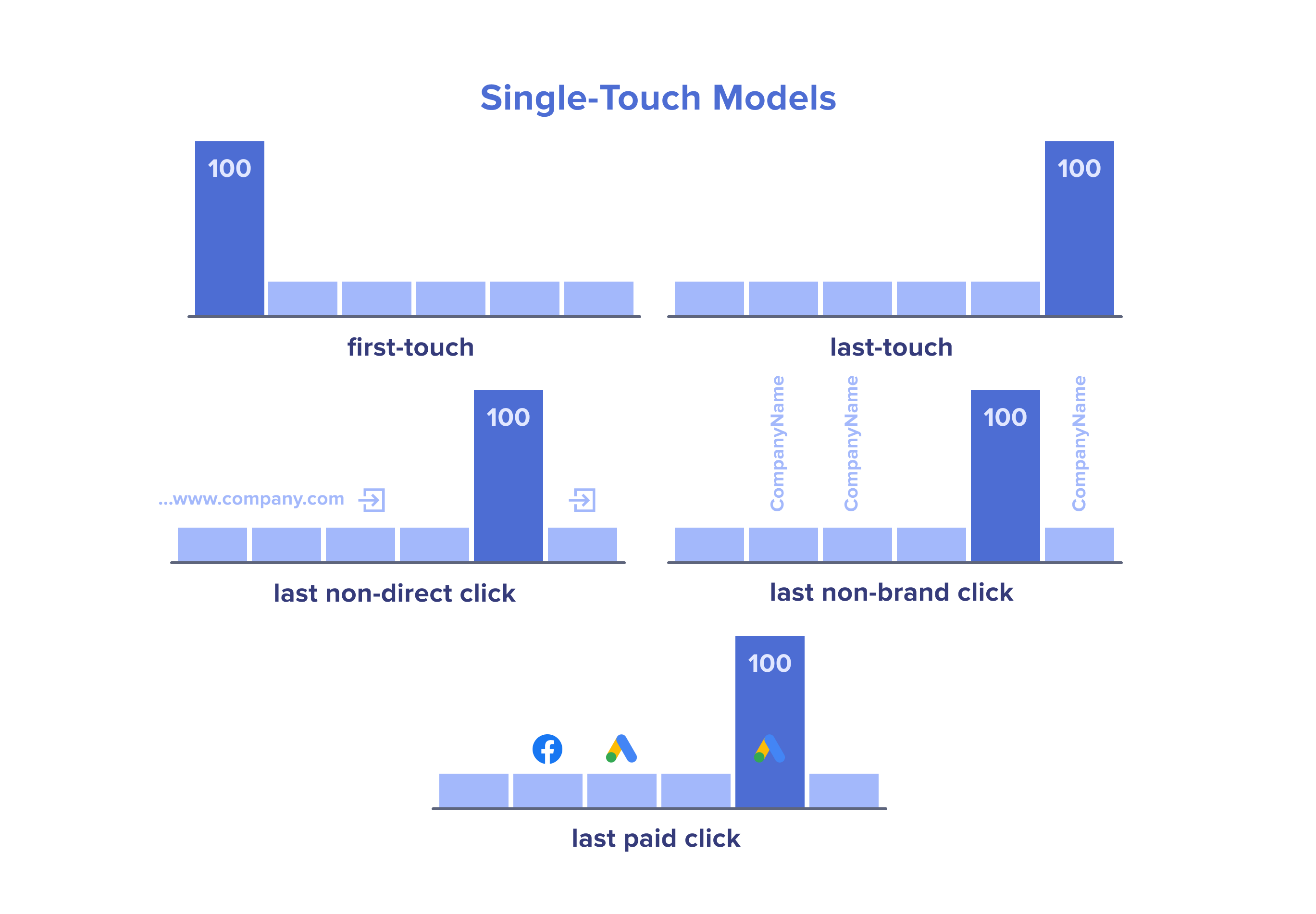
Multi-touch attribution models consider multiple touchpoints in the customer journey and assign a percentage of the credit to each touchpoint. There are several types of multi-touch attribution models which we will discuss later.
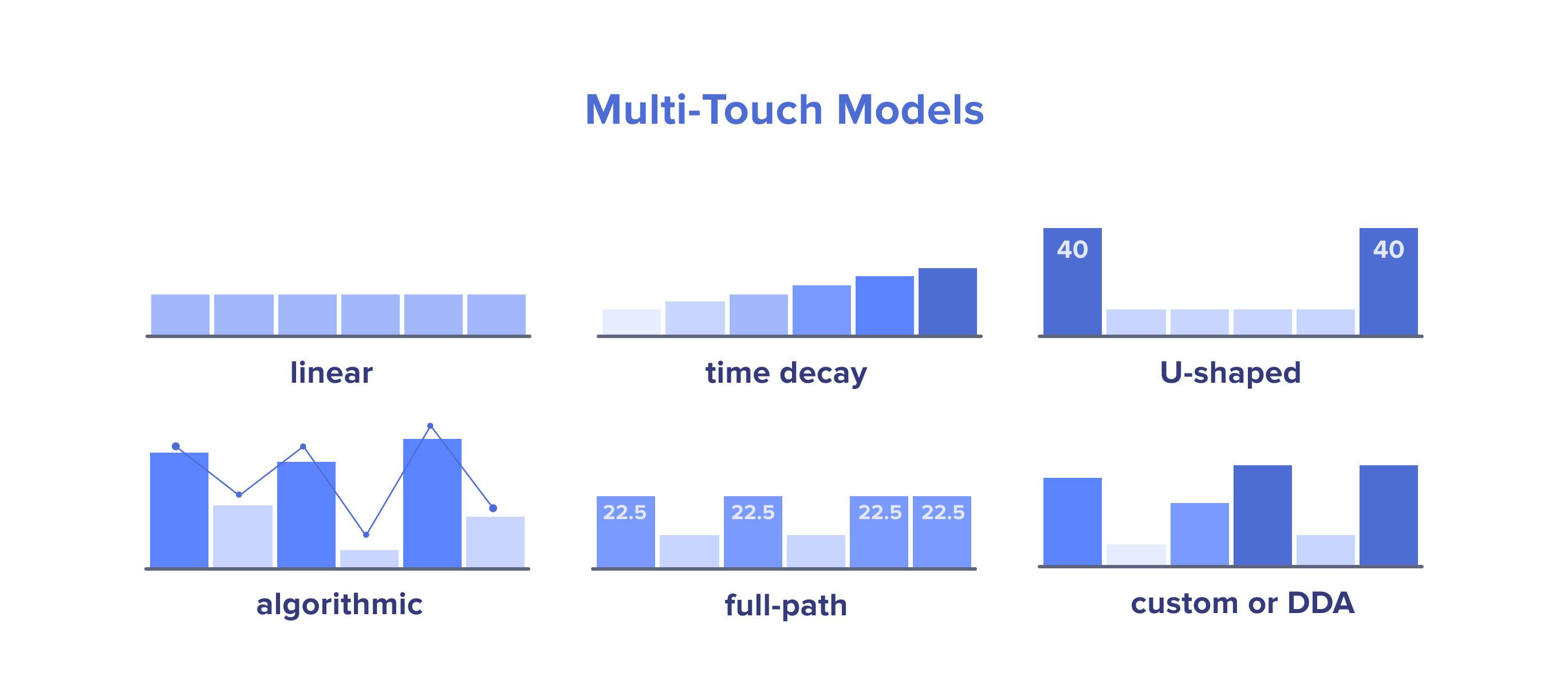
But now, let’s review the differences between probabilistic and deterministic models.
Understanding the difference between probabilistic and deterministic marketing attribution models
Deterministic attribution assigns all credit to a single touchpoint that is responsible for a conversion or sale. This approach is based on the assumption of a definite cause-and-effect relationship between touchpoints and conversions. For example, if a customer makes a purchase after clicking on a Google Search ad, the entire credit would be assigned to that specific ad.
Deterministic attribution models are simple and easy to implement, but they may oversimplify the customer journey and not fully capture the value of touchpoints that happen earlier in the journey. For example, a customer might first hear about a product on social media, but end up making a purchase after seeing a Google ad. In this case, deterministic attribution would only credit the Google ad with the sale.
On the other hand, probabilistic attribution models use probability theory to assign credit to different touchpoints in a customer journey based on their likelihood of conversion. This approach takes into account all touchpoints that a customer encounters along the journey and assigns credit based on the probability of each touchpoint contributing to the conversion.
Probabilistic attribution is considered more accurate and provides a better understanding of the value of marketing channels. However, it can be complex and difficult to understand due to the use of statistical analysis.
In today’s world with all the challenges with attribution, such as complex user journeys and tracking restrictions, deterministic attribution loses to probabilistic models in terms of the preciseness of channels’ evaluation.
Now, let’s review another categorisation as well: single- and multi-touch marketing attribution models.
Single-touch marketing attribution models
These marketing attribution models attribute credit for a conversion to a single touchpoint or channel. While these models are simpler to implement, they are less accurate in attributing credit to the touchpoints that actually led to a conversion.
There are several types of single-touch attribution models.
First-touch attribution model

In this model, credit is given to the first touchpoint a user had with a business. This model does not give credit to any other marketing interactions that might have played a role in the customer’s decision to purchase.
Last touch attribution model

Here, credit is given to the last touchpoint a user had with a business.
Last non-direct click attribution model

In this model, credit is given to the last touchpoint a user had with a business that was not a direct visit to the website.
Last non-brand click attribution model

This model gives all the credit to the last marketing interaction which was a non-branded search term or ad.
Last paid click attribution model

This model attributes all the credit for a conversion to the last paid marketing channel.
Multi-touch marketing attribution models
Multi-touch attribution models give credit for a conversion to multiple touchpoints or channels. They provide a more accurate picture of which touchpoints contributed to a conversion throughout the customer journey.
There are several multi-touch attribution models.
Linear attribution model

Here, credit is distributed evenly across all touchpoints that led to a conversion.
How does the linear attribution model calculate credit? It is a simple algorithm that assumes that each touchpoint contributes equally to the ultimate conversion and assigns credit to each touchpoint accordingly.
Time decay attribution model

The time decay attribution model gives more credit to touchpoints that are closer in time to the conversion.
U-shaped attribution model

This model gives equal weight to the first and last touchpoints in the customer journey, while the remaining touchpoints receive equal weight.
Algorithmic attribution model

Here, a Machine Learning algorithm is used to determine the credit assigned to each touchpoint based on historical conversion data. It takes into account such factors as:
- the type of touchpoint,
- the position of the touchpoint in the customer journey,
- the time since the touchpoint occurred.
This model also requires a significant amount of data to train the algorithm.
Full-path attribution model

This is a type of multi-touch attribution model that considers all touchpoints in the customer journey.
How does the full-path attribution model calculate credit? It assigns credit based on the sequence of interactions that led to the conversion.
This model is trying to provide a comprehensive view of the customer journey and is useful for understanding how different touchpoints work together to drive conversions. It is mostly used to observe the value that the post-opportunity stage marketing provides.
Data-driven attribution models

This is a whole separate subgroup of marketing attribution models. Data-driven models involve analysing data from various marketing channels to identify the touchpoints that customers interacted with before making a purchase or taking a desired action.
Once the touchpoints have been identified, the model assigns a weight to each touchpoint based on its contribution to the final conversion.
Markov chains and Shapely Valley are also data-driven attribution models.
Markov chains attribution model

This model assigns credit based on the probability of each touchpoint leading to a conversion. This model uses historical data to estimate the probability of a customer moving from one touchpoint to the next and assigns credit accordingly.
The Markov chains model is useful for identifying which touchpoints are most likely to lead to a conversion and for optimising marketing campaigns to target those touchpoints.
Shapley Value attribution model
This model uses the Shapley value concept from cooperative game theory. It considers all possible combinations of touchpoints and calculates the average marginal contribution of each touchpoint to the conversion.
Marketing attribution challenges
Traditional marketing attribution models are facing significant issues:
- Tracking limitations: Fully tracking the customer journey is nearly impossible due to cross-device usage and new privacy measures like Safari’s Link Tracking Protection in iOS 17.
- Assumption-based approaches: Models like “first-touch” and “last-touch” rely on assumptions rather than hard data, leading to speculative value assignments.
- Focus on clicks: These models often overlook the impact of non-click interactions, such as visual ads and social media impressions.
- Privacy and cookie constraints: With stricter privacy laws and browser privacy features, cookie-dependent models are losing effectiveness.
- Cross-device: The varied use of devices by consumers complicates accurate attribution across different platforms and touchpoints.
Introducing a solution
To tackle these challenges, we’ve developed SegmentStream Cookieless Attribution. This solution differs from traditional retrospective models by measuring a wide range of data, including user behavior. Unlike conventional approaches that rely on cookies, SegmentStream provides a more comprehensive and accurate view of marketing impact in a privacy-focused world.
Here’s how SegmentStream offers a competitive edge:
- Unlike traditional models, SegmentStream uses machine learning to analyze marketing data, offering deeper and more accurate insights.
- SegmentStream effectively tracks user behaviors across multiple devices, overcoming the limitations of traditional models that struggle with cross-device tracking.
- By not solely relying on cookies, SegmentStream provides a more accurate measurement.
- It helps measure top-of-funnel with view-through attribution that goes beyond just clicks.
- SegmentStream helps not only measure but optimize marketing performance with its AI Budget Recommendations.
These benefits make SegmentStream an appealing alternative for marketers seeking to navigate the complexities of modern digital marketing while achieving accurate attribution and maximizing their marketing ROI.
Optimal marketing
Achieve the most optimal marketing mix with SegmentStream
Talk to expert